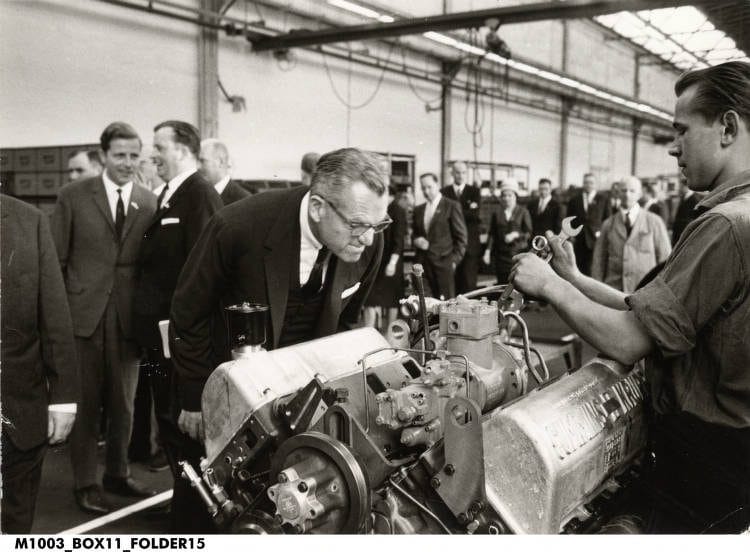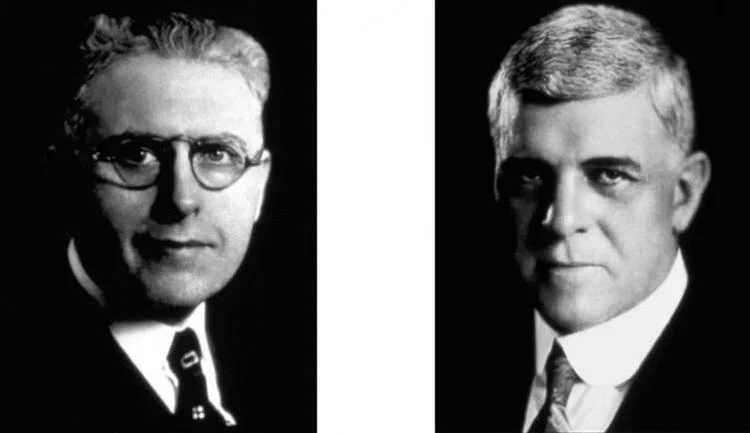Cummins Inc. is a renowned multinational corporation most known for the design and production of diesel engines and generators.
The company has a rich history that dates back to its founding in 1919.

Established: 1919 in Indiana
Key People: Clessie Cummins, William Glanton, J Irwin Miller
Website: cummins.com
History and Background
The company was established by mechanic Clessie Cummins and banker William Glanton Irwin, with a focus on developing diesel engines, a technology that was relatively new at the time.
Throughout its history, Cummins has been at the forefront of innovation in diesel engine technology. The company faced a period of fluctuation in sales and profits in the early 1960s, which was partly attributed to its diversification strategy. This strategy included acquiring interests in various companies related to diesel products and other areas. However, by the late 1960s and early 1970s, Cummins refocused its efforts on diesel engines due to increased demand, especially in the heavy-truck market.
Rise In Popularity
Cummins diesel engines became widely popular starting in the late 1980s and early 1990s, with a significant boost in popularity in 1989 when Cummins introduced the 12-valve 5.9-liter engine in the Dodge Ram. This engine was noteworthy for several reasons:
Introduction in Dodge Ram (1989): The partnership with Dodge was a pivotal moment for Cummins. The 5.9-liter engine, introduced in the Dodge Ram in 1989, was a direct-injected, turbocharged, inline six-cylinder engine. It was quite distinct from the engines offered by competitors, being the only inline six-cylinder, direct-injected, and turbocharged engine among the “big three” automakers at the time. This made it stand out in the market, especially for its robustness and efficiency. [1]
Technical Advancements: The technical aspects of the Cummins engines, such as the mechanical fuel injection system and the Bosch VE44 rotary injection pump (used between 1989 and 1993), contributed to their popularity. These engines were known for their simplicity, reliability, and durability. In 1994, Cummins transitioned to the P7100 P-Pump, which further enhanced the engine’s performance.
Racing and Quality Reputation: Cummins had already built a reputation for quality and innovation in the diesel engine industry prior to the 1980s. A significant historical moment for Cummins was their participation in the 1931 Indianapolis 500, which helped shatter doubts about the viability of diesel engines in high-performance racing. [2]
Economic and Practical Appeal: During the early 1930s, with diesel fuel costing one-third the price of gasoline, the use of Cummins diesel engines grew in popularity. Their introduction of the Model H engine in 1929, a four-cylinder, direct fuel-injected, two-stroke engine, was revolutionary at the time and set a standard for future diesel engines.
Global Expansion and Diversification: Under the leadership of J. Irwin Miller [3] in the post-World War II era, Cummins expanded into worldwide markets and diversified its product line. This global expansion and product innovation further solidified their position in the industry.

Cummins is not just about engines, but a company with diverse portfolio. The Cummins Component Business Unit, for instance, includes emission solutions, filtration, fuel systems, turbo technologies, and electronics. The Cummins Turbo Technologies unit is known for designing and manufacturing turbochargers for diesel engines above 3 liters. Moreover, the Cummins Emission Solutions unit develops and supplies exhaust systems to the commercial diesel engine market.
Another significant aspect of Cummins is its Cummins Power Systems Business Unit. This unit, formed after merging the Power Generation Unit and High Horsepower Sub-Division, includes products like alternators, commercial power systems, engines, and paralleling systems.
Cummins has also made significant strides in sustainability and environmental responsibility. The company has been a consistent name on the Ethisphere World’s Most Ethical Companies list and has focused on creating power solutions that are both innovative and environmentally conscious. Their products range from diesel, natural gas, electric, and hybrid powertrains, to powertrain-related components including filtration and aftertreatment.
The global reach of Cummins is impressive, with operations in regions such as Europe, the Middle East, and Asia. The company has established a technical center in Darlington, England, to develop products specifically for these markets.
The company’s commitment to innovation, quality, and sustainability has helped Cummins build a strong reputation worldwide. With a steadfast focus on the future, Cummins continues to drive forward, developing advanced power solutions and contributing significantly to the global power industry.
Cummins has evolved significantly over the decades, overcoming challenges and seizing opportunities to power a more prosperous world.

External Links
Last modified: March 14, 2024

